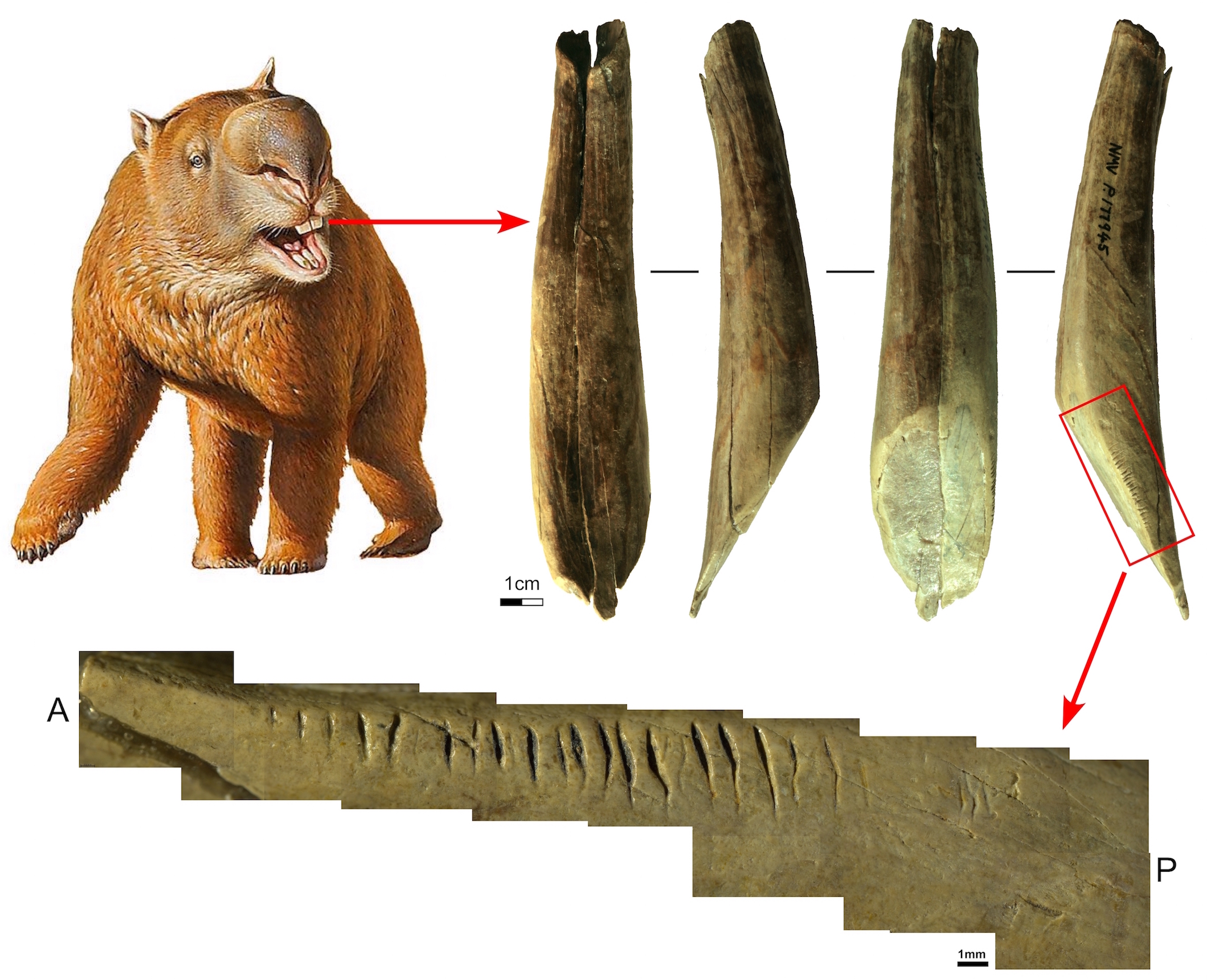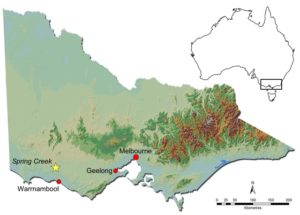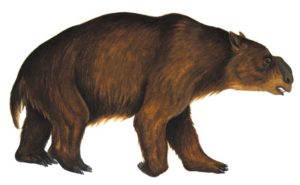
First Australian's co-existed with a giant 'wombat-like' creature for thousands of years - so why is there so little archaeological evidence for the hunting and use of these large animals?
In new research, a Griffith University archaeologist has resolved a long unanswered question of one of the only artefacts, a tooth from a rhino-sized Diprotodon, that provided evidence for human hunting. Found in 1984, the tooth has a number of cut marks on one side, and was thought to be the first archaeological evidence for Indigenous use of materials collected from megafauna.
Dr Michelle Langley from Griffith's Australian Research Centre for Human Evolution and affiliated with Forensics & Archaeology, School of Environment and Science, examined and reanalysed the marks on the incisor (tooth) of the large marsupial herbivore - currently on display in the Bunjilaka Aboriginal Cultural Centre at Melbourne Museum, Victoria.
Cut marks - human-made or not?

This particular Diprotodon optatum specimen was discovered on Eastern Maar Country at Minhamite in regional Victoria in 1984.
Previous interpretations of the distinct cut-like marks made on the Diprotodon tooth were proposed as being made by First Nations people with stone tools, who co-existed with the massive animal for at least 20,000 years before the species died out.
Archaeological evidence for the use of megafaunal materials like skin, bones and teeth remains as elusive, as does evidence for their having been hunted. Among the slim evidence for human-megafaunal interaction available, is the highly cited case of the engraved incisor from the Spring Creek Diprotodon mentioned above.
So, what did make these marks?
Microscopic examination of each mark alongside zooarchaeological and ecological data found that the incisions were not made by human hands but instead by a small 2-5kg mammal, most likely a quoll.
"For quite a while people have felt that the marks weren't consistent with being made by a stone tool as originally proposed, but no one had spent the time to take another look and conclusively rule out stone tools and work out what it could instead be," Dr Langley said.
"So, it's nice to finally have concrete answers and be able to close the door on this case."
Dr Langley worked alongside Vertebrate Palaeontology Collection Manager Tim Ziegler from Museums Victoria to analyse the tooth. She used a high precision stereomicroscope to examine and measure marks across the entire surface of the Diprotodon tooth, which were found to have a wavy, undulating trajectory. Such marks are inconsistent with those left by stone tools.
Dr Langley then compared the marks with those that could have been left by a number of native species known for scavenging and gnawing, such as quolls and Tasmanian devils, and those on remains known to be used by Aboriginal people for tools, such as kangaroos and possums.
By overlaying the cutting pattern of each set of teeth against photographs of the Diprotodon tooth and assessing how many of the incisions could be accounted for by the least number of successive bites, it was determined that almost all of the 29 incisions could be accounted for by the upper jaw of the spotted-tailed quoll in just three successive bites.
"It was challenging trying to work out which animal might have made the marks – but once all the different lines of evidence came together it made perfect sense," Dr Langley said.
"The spotted-tailed quoll is known as a scavenger and opportunist who will have a go at anything once, and they have a great bite force, so were one of the only small mammals that could possibly have left marks on a tooth."
Search for evidence continues

Dr Langley's archaeological research has focused primarily on human cognitive evolution, childhood in prehistory, and ancient Australia.
This particular study reflects her interest the use of bone tools in the deep past, but she believes that in finally determining that the marks on the Diprotodon tooth were not made by human hands has raised more questions around the lack of evidence for human-megafauna interaction in Australia.
At the time of the oldest physical evidence of humans living in Sahul (Ice Age Australia-New Guinea) some 80,000-65,000 years ago, representatives of 8 of the 14 megafaunal taxa roamed the continent. By around 40,000 years ago, all these animals disappeared and the reason for their demise remains debated.
"I do find it really surprising that we haven't yet found evidence for people at least using the bones and teeth of megafauna in Australia — they appear to be good resources for making tools," Dr Langley said.
"I have a feeling that it has more to do with the sample size that is currently available to researchers for study and that it is only a matter of time before we find something.
"While it is certainly possible that some peoples decided not to hunt or use materials from Diprotodon for cultural reasons, it would be really interesting if all peoples who had these creatures on their countries didn't, and it would be great to get the thoughts of Traditional Owners from across the continent regarding that idea.
"Currently, we think Diprotodon died out around 44,000 years ago. We can only guess at their behaviour, but they were about the size of a white rhino, were herbivores, and seasonally migrated – and they certainly could have been dangerous to hunt owing to their size."
The research 'Re-analysis of the 'Engraved' Diprotodon Tooth from Spring Creek, Victoria, Australia' has been published in Archaeology in Oceana.






